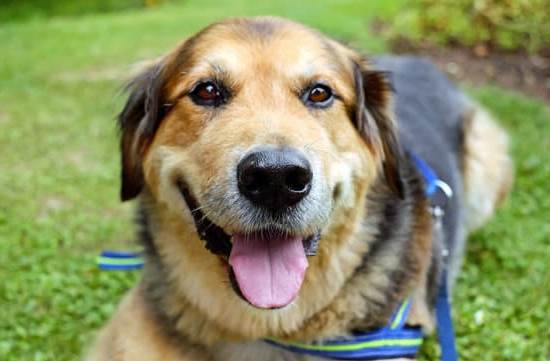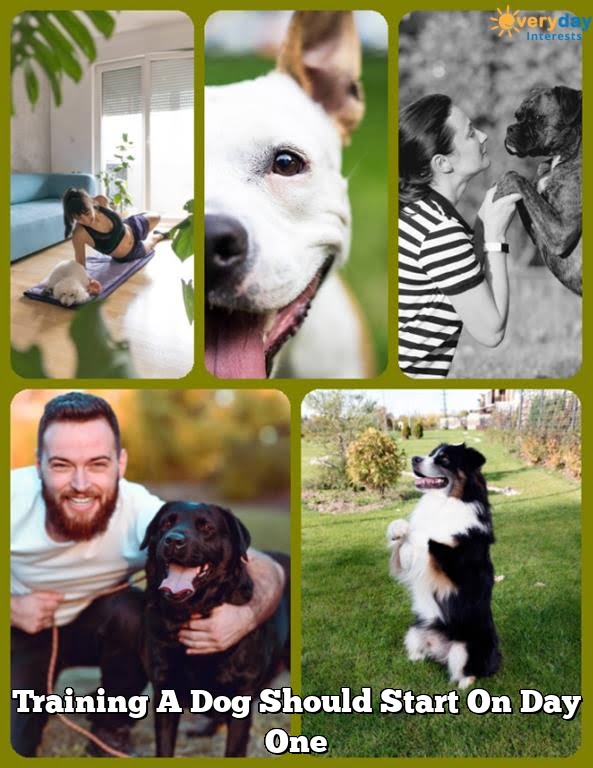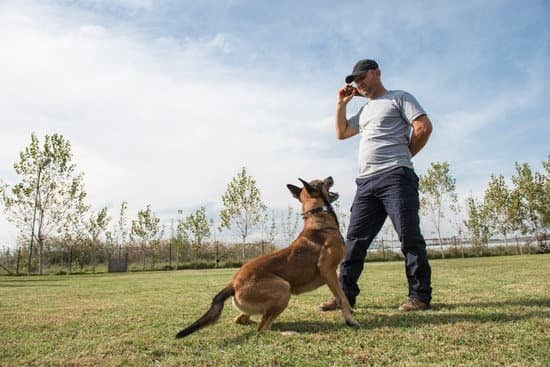Are you wondering how to start training your dog? Training your furry companion is not only essential for their well-being and safety, but it also strengthens the bond between you and your pet. In this article, we will explore the fundamentals of training your dog, from understanding their behavior to choosing the right training method that suits their personality.
As a responsible pet owner, it is crucial to understand the significance of training your dog. Training provides them with mental stimulation, socialization, and helps prevent behavioral issues. By investing time and effort into training your dog, you are setting them up for a happy and well-rounded life alongside you.
Understanding your dog’s behavior and needs is the first step in embarking on a successful training journey. Every dog has its own unique personality and temperament which requires different approaches towards training. By gaining insight into their behavior and needs, you can tailor your training methods to cater to their specific requirements.
Once you have a solid understanding of your dog’s behavior, the next step is to choose the right training method that aligns with their personality. Whether it’s positive reinforcement, clicker training, or obedience classes, finding the best approach for your furry friend will set a strong foundation for their learning journey.
Understanding Your Dog’s Behavior and Needs
Before starting to train your dog, it is important to take the time to understand their behavior and needs. Each dog is unique and may have different triggers, fears, or motivations.
One key aspect is to observe how your dog reacts in certain situations, such as meeting new people or other animals, being around loud noises, or when left alone. By understanding these behaviors, you will be able to tailor your training methods to address any specific issues or challenges that your dog may have.
Additionally, it is essential to recognize your dog’s basic needs in terms of exercise, mental stimulation, social interaction, and a balanced diet. Dogs are social animals that require daily exercise for their physical and mental well-being. Without proper exercise and mental stimulation, dogs can become bored and develop behavioral problems such as excessive barking, chewing on furniture, or digging in the yard.
Another important factor to consider is providing your dog with a safe and comfortable environment at home. This includes having a designated space for rest and sleep, access to fresh water at all times, and opportunities for socialization with other dogs and people. By meeting these needs, you can create a foundation for successful training with a happy and contented dog.
| Understanding Your Dog’s Behavior | Understanding Your Dog’s Needs |
|---|---|
| Observe how your dog reacts in different situations | Daily exercise for physical and mental well-being |
| Tailor training methods to address specific issues | Safe and comfortable environment at home |
| Recognize basic needs: exercise, stimulation, social interaction | Access to fresh water at all times |
Choosing the Right Training Method for Your Dog’s Personality
When it comes to training your dog, it’s essential to consider your pet’s unique personality and temperament. Not all dogs respond to the same training methods, so it’s important to choose an approach that best suits your dog’s individual needs. Some dogs may be more sensitive and require gentle, positive reinforcement techniques, while others may be more energetic and respond well to more active training methods.
One important factor to consider when choosing a training method is your dog’s breed. Certain breeds may have specific traits and tendencies that can influence the way they respond to training. For example, herding breeds like Border Collies may be highly intelligent and require mentally stimulating training exercises, while hound breeds like Beagles may be more independent and require patient and consistent training.
It’s also crucial to assess your dog’s personality and behavior when selecting a training method. Some dogs may be more anxious or fearful and may benefit from calm and reassuring training techniques, while others may be highly driven by food or toys and respond well to reward-based training. By understanding your dog’s unique personality traits, you can choose a training method that will be most effective in helping them learn and thrive.
| Training Method | Best Suited Dog Personality |
|---|---|
| Positive Reinforcement | Dogs responsive to rewards and praise |
| Clicker Training | Dogs with high energy levels |
| Training with Toys | Dogs who are highly motivated by play |
Setting Clear and Achievable Training Goals
One important aspect of setting training goals is to make them achievable. This means breaking down larger goals into smaller, manageable steps that can be easily accomplished by your dog. For example, if your ultimate goal is to teach your dog to walk nicely on a leash, start with the smaller goal of getting them comfortable wearing a leash and being around distractions before progressing to loose-leash walking.
Another crucial factor in setting training goals is to make them specific and measurable. Instead of having a vague goal such as “improve my dog’s behavior,” set a clear goal like “teach my dog to sit on command within two weeks.” This way, you can track your progress and adjust your training methods as needed.
It’s also important for dog owners to understand that every dog learns at their own pace. Be patient with your furry companion and celebrate small victories along the way. Remember that training should be a positive experience for both you and your dog, so always keep the lines of communication open and maintain a positive attitude throughout the process.
| Importance | Tips |
|---|---|
| Clear direction prevents frustration | Consider breed, age, and previous training experience |
| Achievable goals prevent overwhelm | Break down larger goals into smaller steps |
| Specific & measurable goals help track progress | Celebrate small victories along the way |
Basics of Positive Reinforcement Training
Positive reinforcement training is a highly effective and humane method of teaching your dog new behaviors and commands. This approach focuses on rewarding your dog for exhibiting the desired behavior, rather than punishing them for mistakes. This creates a positive learning environment and strengthens the bond between you and your furry companion.
Understanding Positive Reinforcement
Positive reinforcement involves rewarding your dog with treats, praise, or playtime when they exhibit the behavior you want to encourage. For example, if you are teaching your dog to sit on command, you would offer a treat when they successfully sit as instructed. This creates a clear association between the action and the reward, making it more likely that your dog will repeat the behavior in the future.
Benefits of Positive Reinforcement Training
One of the key benefits of positive reinforcement training is that it helps build trust and confidence in your dog. By focusing on positive experiences and rewards, your dog will be eager to engage in training sessions and will be more willing to learn new commands. Additionally, this method promotes a strong bond between you and your pet, as it fosters a relationship built on trust, respect, and mutual understanding.
Tips for Successful Positive Reinforcement Training
When using positive reinforcement training, consistency is crucial. Set clear expectations for your dog’s behavior and make sure everyone in the household follows the same guidelines to avoid confusion. It’s also important to use high-value rewards that truly motivate your dog, such as their favorite treats or toys. Lastly, keep training sessions short and end on a positive note to keep your dog engaged and excited for future sessions.
Establishing Leadership and Communication With Your Dog
Understanding Pack Mentality
Dogs are pack animals by nature, and they instinctively look for a leader to follow. In the wild, the pack leader is responsible for making decisions, providing direction, and maintaining order within the group. When training your dog, it’s important to establish yourself as the leader in a calm and assertive manner. This will help build trust and respect between you and your pet.
Clear Communication
Effective communication is essential for successful dog training. Dogs rely on body language, vocal cues, and consistent commands to understand what is expected of them. It’s crucial to be clear and consistent with your signals and commands to avoid confusion. Additionally, using positive reinforcement such as treats, praise, or toys can further reinforce good behavior and strengthen the bond between you and your dog.
Building Trust Through Training
Training sessions provide an ideal opportunity to strengthen the bond with your dog while establishing leadership. By being patient, understanding, and consistent during training sessions, you can earn your dog’s trust and respect. This will create a strong foundation for effective communication and obedience in the long run.
By understanding pack mentality, practicing clear communication, and building trust through training, you can effectively establish leadership with your dog. These principles will not only improve obedience but also deepen the connection between you and your furry companion.
Common Training Challenges and How to Overcome Them
Identifying Common Training Challenges
Training your dog can come with its fair share of challenges, and it’s important to be aware of the most common ones. Some dogs may struggle with basic commands such as “sit” or “stay,” while others may exhibit behavioral issues like barking excessively or pulling on the leash during walks. Understanding these challenges is the first step in addressing them effectively.
Strategies for Overcoming Training Challenges
One effective strategy for overcoming training challenges is to break down the desired behavior into smaller, achievable steps. For example, if your dog has difficulty with “stay,” start by having them stay for just a few seconds before gradually increasing the duration. Consistency and patience are key during this process, as dogs need time to understand and learn new behaviors.
Another common challenge is dealing with distractions during training. Whether it’s other pets, people, or environmental stimuli, distractions can make it difficult for a dog to focus on training. One approach to overcoming this challenge is to gradually introduce distractions during training sessions once your dog has mastered basic commands in a controlled environment.
Seeking Professional Guidance
In some cases, it may be beneficial to seek professional guidance when facing training challenges. A certified dog trainer or behaviorist can provide valuable insight and personalized strategies for addressing specific issues.
Additionally, attending obedience classes or enrolling in specialized training programs can offer structured support and guidance for both you and your dog as you work through training challenges. Remember that every dog is unique, and seeking professional assistance demonstrates a commitment to understanding and meeting your dog’s individual needs.
Consistency and Patience
When it comes to training your dog, consistency and patience are crucial for achieving success. Dogs thrive on routine and repetition, so it’s important to establish consistent training methods and expectations. Additionally, patience is essential as dogs may not learn a new behavior or command immediately. By maintaining consistency and exercising patience, you can effectively shape your dog’s behavior and build a strong foundation for successful training.
Here are some tips for maintaining consistency in your dog training efforts:
- Establish a regular training schedule: Setting aside dedicated time each day for training will help your dog understand when learning is expected.
- Use the same verbal cues and hand signals: Consistently using the same commands and gestures will help your dog associate specific behaviors with certain cues.
- Reinforce positive behaviors consistently: Whether it’s through praise, treats, or toys, be sure to reward good behavior every time it occurs.
In addition to consistency, practicing patience is essential when training your dog. Remember that learning takes time, so it’s important not to get frustrated if progress seems slow. Patience allows you to work through challenges without becoming discouraged, ultimately leading to more effective and enjoyable training sessions for both you and your furry companion.
Advanced Training Techniques for Obedience and Skill Building
Once your dog has mastered the basics of obedience training, you can start incorporating more advanced techniques to further develop their skills and abilities. Here are some advanced training techniques to consider for obedience and skill building:
- Agility Training: This type of training involves teaching your dog to navigate through obstacle courses, including tunnels, jumps, weave poles, and more. Agility training not only improves your dog’s physical coordination and strength but also enhances their mental sharpness.
- Advanced Obedience Commands: Once your dog has mastered basic commands like sit, stay, and come, you can move on to more complex commands such as heel, fetch, and roll over. These advanced obedience commands require patience and consistency but can strengthen the bond between you and your dog.
- Nose Work: Dogs have an incredible sense of smell, and nose work training taps into this natural ability by teaching them to search for specific scents. It’s a great way to mentally stimulate your dog while enhancing their focus and concentration.
Incorporating these advanced training techniques into your dog’s routine can provide both mental and physical stimulation, prevent boredom, and help build a stronger bond between you and your furry friend. Keep in mind that not all dogs will excel at every type of advanced training, so it’s essential to be patient and understanding of your dog’s individual abilities.
Remember that consistency is key when introducing new training techniques. Always use positive reinforcement methods to motivate and encourage your dog during their advanced training sessions. With time, patience, and dedication, you’ll be amazed at what you and your dog can achieve together through advanced obedience and skill-building training.
Resources and Tools for Successful Dog Training
When it comes to training your dog, having the right resources and tools can make a significant difference in the success of your training efforts. One of the most important tools for successful dog training is a quality leash and collar. These are essential for teaching your dog to walk on a leash, as well as for maintaining control and ensuring safety during training sessions.
Another important resource for successful dog training is proper education and information. There are countless books, online resources, and even professional trainers who can provide valuable guidance and insights into effective training techniques and strategies. By taking the time to educate yourself about dog behavior and training methods, you can set yourself up for success in working with your canine companion.
In addition to physical tools and educational resources, utilizing positive reinforcement treats and toys can also be incredibly useful in motivating and rewarding your dog during training sessions. Whether it’s a favorite treat or a special toy, these rewards can help reinforce good behavior and make the learning process more enjoyable for both you and your dog.
By incorporating these tools into your training routine, you’ll be better equipped to effectively communicate with and guide your furry friend towards obedience and skill building.
Conclusion
In conclusion, embarking on the journey of training your dog can be a deeply rewarding experience for both you and your furry companion. By investing time, effort, and patience into understanding your dog’s behavior and needs, choosing the right training method, and setting clear goals, you are laying the foundation for a strong and positive relationship with your pet.
It is important to remember that successful dog training requires consistency and patience. There will be challenges along the way, but by staying committed to positive reinforcement techniques and clear communication, you can overcome these obstacles and continue to make progress in your dog’s training.
As you advance in your dog’s training, consider exploring advanced techniques for obedience and skill building. These can further strengthen the bond between you and your dog while also providing mental stimulation and fulfillment for your pet.
Additionally, utilizing available resources and tools such as professional trainers, online tutorials, or training aids can support your efforts in achieving success in your dog’s training journey. By approaching each aspect of training with dedication and understanding, you can create a harmonious and well-behaved relationship with your beloved canine companion.
Frequently Asked Questions
How Do You Train a Dog for Beginners?
Training a dog for beginners involves being patient, consistent, and using positive reinforcement. Start with basic commands like sit, stay, and come, and gradually build up to more advanced training. It’s important to establish a routine, provide clear signals to your dog, and use rewards like treats or praise to reinforce good behavior.
What Are the 5 Golden Rules of Dog Training?
The 5 Golden Rules of Dog Training are based on positive reinforcement and include consistency, patience, setting realistic goals, being clear in communication with your dog, and providing regular mental and physical stimulation. These rules help build a strong bond between the owner and the dog while promoting good behavior.
Can I Train My Dog Myself?
Yes, you can train your dog yourself with commitment, consistency, and patience. Many basic training techniques can be learned through online resources or books.
However, if you encounter difficulties or have specific behavior issues that need professional help, it’s advisable to seek guidance from a qualified dog trainer or behaviorist. With dedication and the right approach, training your dog yourself is definitely possible.

Welcome to the blog! I am a professional dog trainer and have been working with dogs for many years. In this blog, I will be discussing various topics related to dog training, including tips, tricks, and advice. I hope you find this information helpful and informative. Thanks for reading!





